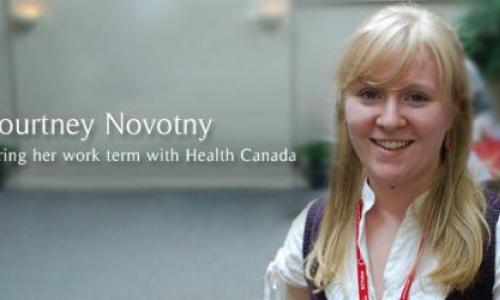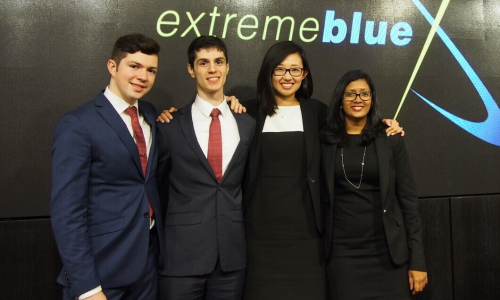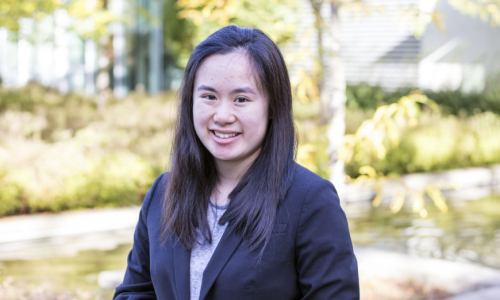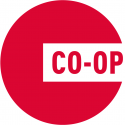
Hey, my name is Gary, and I’m going to be sharing the biggest lessons I learned about living and working in another country from my experiences in what I can easily say has been the best seven months of my life. A lot has gone on over those past few months, but now that I’m back in Vancouver, I can truly reflect on everything I learned—including all the ups and downs of my experience.
Flashback to January 2017, when I was furiously working on an unexpected project while still juggling my classes. This wasn’t a regular school project. It was a design challenge to test my skills in User Experience (UX) and User Interface (UI) design as part of my application to join the UX team at the adidas Group Global Headquarters in Herzogenaurach, Germany. A few sleepless nights and one incredibly groggy 2AM Skype presentation and interview later, I got my internship offer (which I later turned into a self-directed co-op). I gladly accepted and a few weeks later, I was off to Germany for seven months.
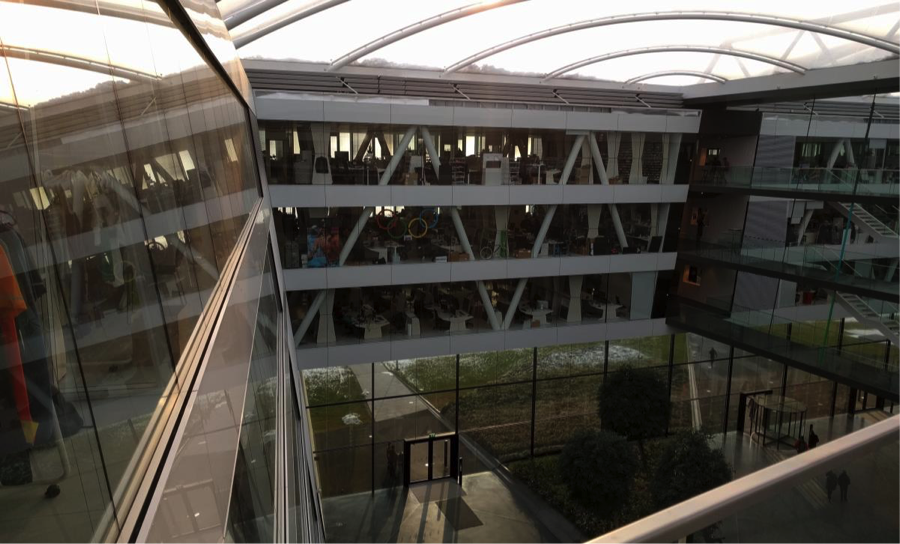
A shot from the flagship building at adidas HQ
Lesson One: Be Organized
This could easily be an entirely separate post about dealing with the heaps of German bureaucracy (which even Germans admit is a challenge) related to working and living in Germany, but I can’t stress enough how important it is to be organized and have a plan. One of the best things I did was to create multiple copies of every piece of paperwork I needed or was going to need (e.g. my passport, visa, work contract, future housing forms, etc.)—both printed and digital. This also allowed me to create a plan of everything I was going to need before I left, such as a German bank account and cell phone number. Following this, research as much as you can about everything, including where to live, where to eat, what to pack, what to buy, and what to do. In my case, I joined the adidas Intern Facebook group, browsed blogs and forums (often written by ex-pats), and scouted the city on Google Maps. All my research and preparation made my arrival a lot less stressful and kept me focused.
Lesson Two: You Will Miss Home
Though somewhat counterintuitive to the above, no amount of preparation can mentally prepare you for what’s to come. For me, being thrown into such a foreign environment was exciting and amusing for only about the first two to three days where I still felt like a tourist. You then come to realize that you’re going to be living here. You don’t speak the language. You don’t really know anyone yet. You can hardly even figure out how to buy groceries. You feel completely disconnected with the culture and environment around you. You really get an overwhelming sense of homesickness. It’s inevitable.
One of the biggest impacts I first felt was just figuring out what to eat. I remember one of the first meals I had was from an Asian fast food place in a mall. It was a roller coaster of emotion from excitement, to disappointment, to disgust, to homesickness (Vancouver really has it good when it comes to Asian food). My first trip to the grocery store was quite the shock as well—it was a far cry from the grandeur of Walmart or Costco—the store was tiny, the food was different, there wasn’t a lot of selection, they didn’t have what I wanted, I couldn’t read the labels, the list goes on. I’ve never felt so foreign in such a familiar place as the grocery store before.
For me, this was the first time I’d be living completely independent of my family and I had to adapt to having “adult” responsibilities quickly, like planning my finances, cooking, and doing the dishes or laundry. Luckily for me, these responsibilities, along with being thrown into a busy job, helped keep my mind occupied and focused rather than thinking about home. I think the best advice I can give for homesickness is to stay busy, take things one step at a time, and think about all the exciting opportunities you’ll have during your time away.
Lesson Three: Run or Fall
"It’s going to feel like there’s a million things stressing you out—be it work, culture shock, living independently, etc.—and there will be a point where you feel completely overwhelmed. But if you let it get to you, you’re going to crash."
I had a conversation with another fellow intern and close friend of mine, who was also from Vancouver, about a month or two after we finally settled in Germany. We both had similar experiences coming from Vancouver and he provided a strong metaphor for what it was like for us to settle in. He compared our experiences of moving across the world and working at adidas to being thrown onto a running treadmill. You either land and start running or fall flat on your face. When you get thrown into this metaphorical treadmill, you just have to keep moving forward and stay confident. It’s going to feel like there’s a million things stressing you out—be it work, culture shock, living independently, etc.—and there will be a point where you feel completely overwhelmed. But if you let it get to you, you’re going to crash. Sooner or later though, you’ll develop your stride and the running can get relaxing. For me, it was all about handling everything one day at a time and understanding that certain things are beyond your control. For example, when I first landed in Germany, I technically did not have a work-approved visa; I had to get one when I was there. I had this incredible looming stress about being deported or fired. It wasn’t until I submitted my visa application that I realized a lot of my stress was beyond my control. I had no power over if/when I’d get my visa, so worrying about it wasn’t going to do me any good. Luckily I got my visa after five weeks and I was officially good to go.
Lesson Four: Go Experience Everything You Can
As much as my internship was about work and developing my skills as UX designer, the experiences I had were equally, if not more, enriching. I was lucky enough to really indulge in some fantastic experiences. To list a few, I got to: drink beer by the litre in one of the largest outdoor beer gardens in the world, be a swimsuit model, watch Germany play in the Euro Cup from the front row, and visit 25 cities in nine countries, among many other things. Especially as a designer, going out into the world really helps inspire your creativity and allows you to learn more about the kinds of people you may be designing for. Even when I stayed in my city, I had some of the best friends and the coolest workplace to always keep things new and interesting. I can’t be grateful enough for the friends I met through my internship. They were a support network that kept homesickness at bay, an endless source of fun and experiences, and significant part of why my internship was as great as it was. Living and working in another country could have become an incredibly isolating experience if it were not for the people I met.
"... going out into the world really helps inspire your creativity and allows you to learn more about the kinds of people you may be designing for."
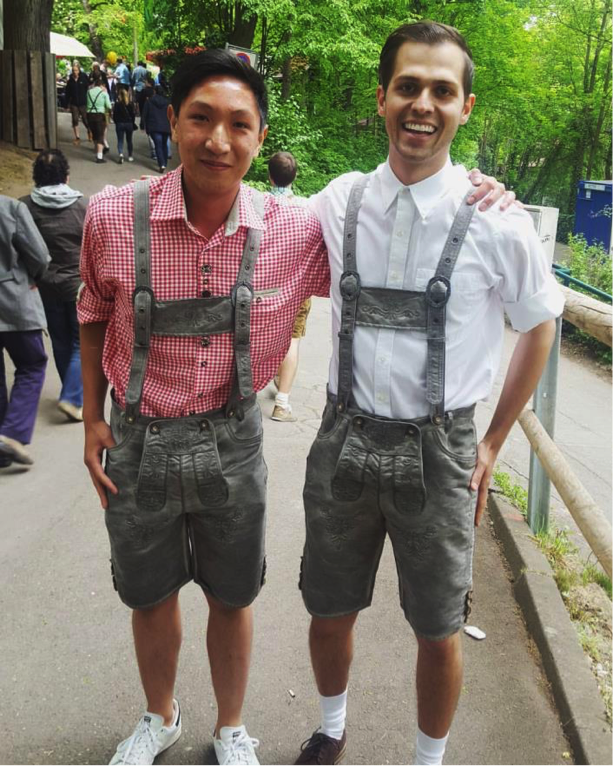
Soaking up some Bavarian Culture with a friend
Lesson Five: Designing in the Workplace
Since I am a SIAT student, I should probably include some things I learned about myself as a designer as well. The first major thing I learned was to be confident in my designs. As obvious as that may sound, when you’re thrown into a meeting in your first few weeks and all the attention is on you and your work, it can be difficult. It wasn’t just some school project or portfolio piece, but an actual design that will likely be implemented and used. However, I remember one of the first bits of advice my boss gave me was to pretend I wasn’t an intern—I was a full-fledged UX designer on the team. That mentality took off a lot of the pressure of attending meetings and voicing my opinion, especially as time progressed and I got more experience. And more importantly, it helped me view my work, not as my own, but as part of my teams’, where we all supported and helped each other with our work.
As I began to gain my footing at work, I found that developing proper communication skills for a professional environment is crucial in pushing for your designs. This is especially the case since adidas isn’t a tech or design company and 90% of the staff you’re collaborating with won’t know what User Experience design is. Thus, being able to communicate and explain your work to others is crucial in both the planning and development stages of a project. In addition, learning to communicate within your team is equally as important. In my internship, I had a fairly independent, hands-off role without a lot of micromanagement or mentorship. As such, knowing when and what to communicate was pivotal. Whether it’s project updates or a secondary opinion, keeping a clear, concise, and open line of communication helps work progress smoothly and builds a stronger relationship within your team.
"As designers, we must remember that 99% of the time, we aren’t designing for us, but for real users."
Lastly, usability testing and research is crucial part of the design process. I know that in the realm of SIAT, usability testing and user research is often a neglected, check-the-box kind of procedure we do for projects. However, in a real-world environment where your work is shipped and goes out to actual users, usability testing and research can provide insights and information you would never expect. As my team was focused around these aspects of user experience, I got to conduct a lot of surveys and interviews, research, and analyze the data we collected. Almost every time I did so, there was always a surprise, whether it was a new user case, an unexpected usability issue, or unique insight. Usability testing and research is a very technical aspect that we can sort of forget as we get caught up in the realm of “design” and visuals. However, at the end of the day, it is one of the only ways you can ensure that your design actually works. As designers, we must remember that 99% of the time, we aren’t designing for us, but for real users.
Final Thoughts
My internship at adidas Group was, simply put, a life changing experience. Moving to Germany and interning at adidas challenged me in ways I could have never experienced at home. The opportunities, experiences, and the pitfalls pushed me to new places as a designer and an adult—I feel like I’m able to tackle anything moving forward. I encourage everyone to study or work abroad if possible at least once; and, if possible, to try new environments, new experiences, and new challenges. If you do, I hope you find my experiences and lessons helpful, so you can spend less time stressed and more time making the most of your experience.
Beyond the Blog
- Want an opportunity like Gary's? Visit the International Co-op Page to find out how!









